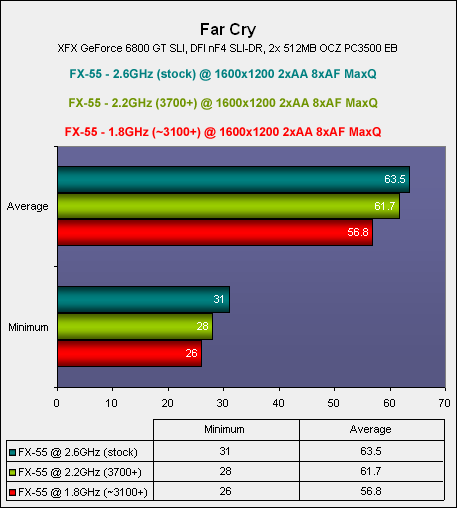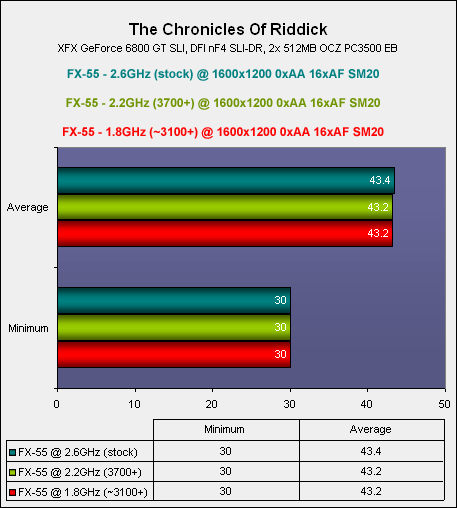Far Cry
Publisher: Ubisoft
Far Cry is the only title in our selection that uses the highly publicised Split Frame Rendering SLI mode. Split Frame Rendering is generally a very video card bound method of rendering the scene in SLI, however, we see a linear pattern in the results. We found that we did not have to lower the detail settings, meaning that it is possible to achieve the same game play experience on both a mainstream and bleeding edge CPU. This proves that Far Cry's in-game graphics settings are not massively determined by CPU power.
However, we did see slightly lower average and minimum frame rates on the mainstream ~3100+, but not to an extent where our game play was affected massively. We still averaged close to 60 frames per second at 1600x1200 2xAA 8xAF with Maximum quality, and our minimum frame rate was still in the mid-high 20's. Obviously, the faster the CPU, the smoother our gaming experience was, but you have to ask whether the extra money is worth it in a title like Far Cry?
The Chronicles of Riddick: Escape from Butcher Bay
Publisher: VU Games
Much like with Doom 3, we saw no performance deficit from using a slower CPU, and we saw an identical gaming experience on our pseudo Athlon 64 3100+, 3700+ and FX-55 processors. The minimum frame rate did not drop, and we saw a mere 0.2 frames per second drop in our average frame rate, which was quite outstanding to see. A CPU that would cost less than £150 performed as well as AMD's top-of-the-line Athlon 64 FX-55, which costs a massive £560 here in the UK.

MSI MPG Velox 100R Chassis Review
October 14 2021 | 15:04






Want to comment? Please log in.